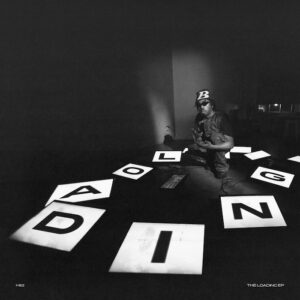How Jean-Michel Basquiat’s Sisters Reclaimed Their Family’s Narrative


Photo Credit: Miranda Penn Turin
“It was about Jean-Michel Basquiat the painter, and mostly Jean-Michel Basquiat the man, the son of a Haitian father and Puerto Rican mother, and the brother to two Black girls, now women,” Lisane Basquiat said of her brother’s new show “King Pleasure.”
Lisane Basquiat’s earliest memory of her brother, Jean-Michel Basquiat, consists of one moment she’s mentally tucked away. Speaking to me on Zoom, Lisane told me through laughter how, as a child, Basquiat had convinced her that if she ate the seeds from a watermelon, she would sweat watermelon juice and have watermelon whenever she wanted it.
“Our mom was cutting up a watermelon. We were going out to a picnic — I had to be really, really young,” she said. His other sister, Jeanine Heriveaux, recalls a different memory.
“I would say mine is playing on East 35th Street [in Brooklyn],” she said. “I remember having this little bike and riding it around on this deck that we had off of the back of the house, and Jean-Michel being in the background while that was happening.”
Now 54, Jeanine fondly shared that there was a seven-year difference between her and Basquiat, who grew up to be a world-renowned artist. Lisane, 57, is two-and-a-half years older than her sister. This age difference allowed the siblings to bond together: riding bikes, playing freeze tag, and handball.

Lisane Basquiat, Jean-Michel Basquiat and Jeanine Heriveaux pose for a family portrait. Photo Credit: Estate of Jean-Michel Basquait
“Whether we lived in Puerto Rico, in Flatbush, or in Boerum Hill we played together,” Heriveaux said, describing herself and her two siblings as a “solid unit.”
During the transformative years when they all lived under one roof, Lisane and Jeanine said their mother Matilde was always exposing them to creativity, museums, and libraries. The Brooklyn Museum of Art, specifically, was a large part of Basquiat’s life, since the family spent many years living in Brooklyn. They also frequently attended the Puerto Rican Day Parade together too, partaking in the festivities for years.
“It was really, really important for her to immerse us in her culture and all things about New York City and Brooklyn that she loved because this is where she grew up,” Heriveaux said. “One thing that was great about our mom is she felt that everything was a teachable moment, and [she worked on] really exposing us to different things in order to spark whatever interest we [had].”
A part of Basquiat’s story is having creative, rambunctious energy that neither of his parents snuffed out, something that’s not commonly the norm for children born to immigrant parents.
“When he was younger, there was a lot of support,” Heriveaux said. “My dad would encourage him to draw by bringing home paper and pencils for him to sketch with.”

The beginning of “King Pleasure” where visitors can view key works of Jean-Michel Basquiat and home videos recorded years ago. Photo Credit: Ivane Katamashvili
However, when Basquiat decided he would be an artist full-time, Heriveaux said there was a shock among the family, particularly from his father, the late Gerard Basquiat. Of Haitian descent, Gerard had set high expectations for his son — and the arts were not what he saw for him.
“The expectation was that you become a white-collar something,” Lisane said. “That was actually one of the things that [were] challenging in that Jean-Michel had a different vision for his life from what our dad and our mom [had] to some extent.”
Lisane said there was tension between their father and Basquiat, who knew his life’s work would be creating art.
“At the time there was no Jean-Michel Basquiat to point to as the role model or person who had already [succeeded]. It was him having to do that himself,” she said. “People snuff out their own dreams because they want to do what is expected of them. I think that’s part of [his] story too: to follow that dream and to do that thing that you know you are supposed to do within your own spirit.”
In following his dream, Basquiat became a successful artist, proving to his family that he was capable of creating art for a living.

A recreation of the Basquiat family’s dining room in Boerum Hill in Brooklyn. Photo Credit: Ivane Katamashvili
“There were a couple of years when he did not come home and he came back and said, ‘Hey, I did this, I am successful at it,’” Lisane recalled while adding that the family embraced and supported his choice. “We went to many of the gallery openings and saw him while he was alive and tried to support him as best as we could, while he was around,” she said. “He was very much a presence in our lives.”
The family’s closeness is somewhat a part of the artist’s story that often doesn’t get written about enough. His superstardom often overshadows the presence of his family, including his sisters throughout his entire life. From our conversation, it becomes evident that reclaiming their narrative is important to them.
Their exhibit, “Jean-Michel Basquiat: King Pleasure,” is what his sisters believe is what they will leave behind as a way of upholding their brother’s legacy.

A robust room within “King Pleasure” featuring works that are a part of the Basquiat family’s personal archives. Photo Credit: Ivane Katamashvili
The exhibit is the result of various never before seen works from Basquiat. Alongside their stepmother Nora Fitzpatrick, Lisane and Jeanine spent the last five years organizing their brother’s paintings, childhood drawings, photographs, his personal collection of African figures, and much more (the sisters are co-administrators of the Jean-Michele Basquiat estate which Gerard Basquiat previously ran prior to his death).
Lisane and Jeanine refused to create an exhibit that was simple. Instead, they opted to create something that had the complexity and layers that they believed Basquiat had. She explained the two of them also wanted to encapsulate their own ancestry while sharing something beautiful with the artist’s many fans.
“So, it was about Jean-Michel Basquiat the painter, and mostly Jean-Michel Basquiat the man, the son of a Haitian father and Puerto Rican mother, and the brother to two Black girls, now women,” Lisane said.

A reimagination of Jean-Michel Basquait’s 57 Great Jones Street 1984 studio. Photo Credit: Ivane Katamashvili
177 of the 200 pieces shown have never been viewed by the public. The 41-foot wide “Nu Nile” is a standout, but there are other components that are equally important, like the recreation of the Basquiat family living room from their Boerum Hill home. It’s accentuated with a floral couch and wallpaper identical to what was formerly a part of a home the siblings lived in. Hung photographs are also set up on a wall reflective of decorative touches the parents had chosen years ago.
Throughout the robust Starrett Lehigh building in Chelsea (designed by Black architect David Adjaye), Basquiat’s lifelong passion for creating is on display within the 15,000 square foot space. Further, in the show, there are also paintings centering his innermost thoughts on race, politics, and even other Black celebrities. VHS recordings of intimate moments with his family are also viewable as soon as you make your way into the exhibit. The Michael Todd VIP Room of the Palladium is also beautifully recreated: it includes period-centric decorations that speak to Basquiat’s ample time spent there years ago.
A recreation of Basquiat’s 1984 work studio, which was located at 57 Great Jones Street, is another significant highlight. Stacks of books, a bustling television, a bicycle, sketches, paintings, a Comme Des Garçons trench coat, and more adorn the recreated studio. It’s perhaps one of the most expressive spaces in the entire exhibit.
“I think Jean-Michel has become to some people, this mythical person,” Lisane said. “There are stories told about him, friends that he had, and that kind of thing. But the real story of who he was, was something that we wanted to provide more information about…it was really important for us to bring a little bit more intimacy to who Jean-Michel was.”
As an artist that left his unique touch on the art world, seeing “King Pleasure” provides an unfiltered perspective from those who knew him intimately — his family. The new exhibit provides a space for his family to share who Jean-Michel Basquiat was to them. But it also provides an opportunity for viewers to engage with the legend in a personal way.







